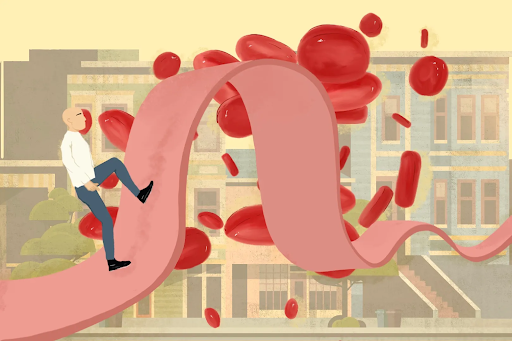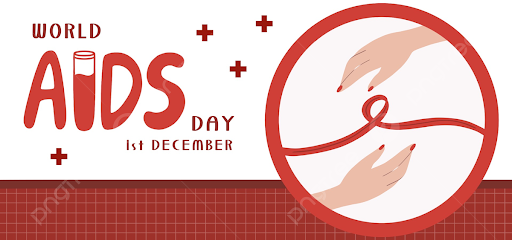HIV & AIDS: Changing Social Perceptions
HIV and AIDS have been two of the most challenging health crises in recent history, with a profound impact on individuals, communities, and societies worldwide. Understanding the historical and social context of this disease is crucial to address the associated stigma, promote prevention, and discuss recent developments in medicine. In this article, we will explore the history of HIV and AIDS, examine the lingering homophobia, highlight recent medical breakthroughs, and suggest ways to change social perceptions while emphasizing prevention techniques. |
The Historical Context

HIV, or Human Immunodeficiency Virus, was first identified in the early 1980s. However, its origins likely date back to the early 20th century. The virus is believed to have jumped from primates to humans, possibly during the hunting and consumption of bushmeat in Central Africa. It slowly spread, often unnoticed, over several decades before becoming a global pandemic.
The emergence of AIDS (Acquired Immunodeficiency Syndrome) in the 1980s was a watershed moment. Initially, the disease primarily affected homosexual men, and it was labelled as GRID (Gay-Related Immune Deficiency). This early characterization fueled homophobia and discrimination against the LGBTQ+ community, which still lingers in some quarters today.
Homophobia and HIV/AIDS
Homophobia and HIV/AIDS have been inextricably linked throughout history. The association between HIV/AIDS and gay men in the early years of the pandemic reinforced existing prejudices. People incorrectly believed that the virus was exclusively a “gay disease,” leading to discrimination and isolation of LGBTQ+ individuals.
Changing Social Perceptions
To change social perceptions and combat the stigma surrounding HIV/AIDS, education and awareness are key. Society must recognize that HIV/AIDS can affect anyone, regardless of their sexual orientation, gender identity, or any other personal characteristic. Initiatives that emphasize the universal nature of the disease, such as campaigns that showcase diverse individuals affected by HIV, can help challenge stereotypes and reduce discrimination.
Promoting empathy and understanding is essential. Personal stories of individuals living with HIV/AIDS can humanize the disease, helping others to see beyond stereotypes and misconceptions. Communities need to support those living with HIV/AIDS rather than marginalise them. This includes advocating for equitable access to healthcare, employment, and social services.
Recent Medical Developments
In recent years, medical science has made significant strides in managing HIV/AIDS. Antiretroviral therapy (ART) has revolutionized the treatment landscape. These medications can suppress the virus, allowing individuals with HIV to live longer, healthier lives. Furthermore, pre-exposure prophylaxis (PrEP) and post-exposure prophylaxis (PEP) have become powerful tools in preventing new infections.
One of the most remarkable recent developments in HIV/AIDS research is the pursuit of a functional cure. Scientists are exploring strategies to eliminate or control the virus without the need for lifelong medication. These promising avenues include gene editing technologies like CRISPR-Cas9 and innovative vaccine approaches. While a complete cure remains elusive, these advances offer hope for a future where HIV/AIDS is a manageable condition.
Prevention Techniques
Prevention remains the most effective strategy in the fight against HIV/AIDS. Education and awareness are the cornerstones of prevention efforts. Comprehensive sex education in schools, accessible information in communities, and open conversations about safe sex are all vital components of prevention.
Condom use continues to be an essential tool in reducing the transmission of HIV. Additionally, regular testing for HIV and other sexually transmitted infections (STIs) is crucial. Knowing one’s status allows for early intervention and treatment, preventing further transmission.
As mentioned earlier, PrEP and PEP are game-changers in HIV prevention. PrEP involves taking daily medication to reduce the risk of HIV infection for individuals at high risk, while PEP is a short-term course of medications taken after potential exposure to HIV.

Prevention Techniques
Prevention remains the most effective strategy in the fight against HIV/AIDS. Education and awareness are the cornerstones of prevention efforts. Comprehensive sex education in schools, accessible information in communities, and open conversations about safe sex are all vital components of prevention.
Condom use continues to be an essential tool in reducing the transmission of HIV. Additionally, regular testing for HIV and other sexually transmitted infections (STIs) is crucial. Knowing one’s status allows for early intervention and treatment, preventing further transmission.
As mentioned earlier, PrEP and PEP are game-changers in HIV prevention. PrEP involves taking daily medication to reduce the risk of HIV infection for individuals at high risk, while PEP is a short-term course of medications taken after potential exposure to HIV.
CONCLUSION
HIV and AIDS have had a profound impact on individuals and communities globally. Understanding the historical and social context of the disease is essential to combat stigma and discrimination. Recent medical advances provide hope for the future, but prevention remains our most potent tool in the fight against HIV/AIDS.
To change social perceptions, we must work collectively to challenge stereotypes, promote empathy, and support those affected by HIV/AIDS. By focusing on comprehensive education, accessible healthcare, and an inclusive approach, we can move closer to a world where HIV/AIDS is no longer a source of fear and discrimination, but a manageable condition. Together, we can overcome the challenges posed by HIV and AIDS and create a more inclusive and compassionate society.
Author

